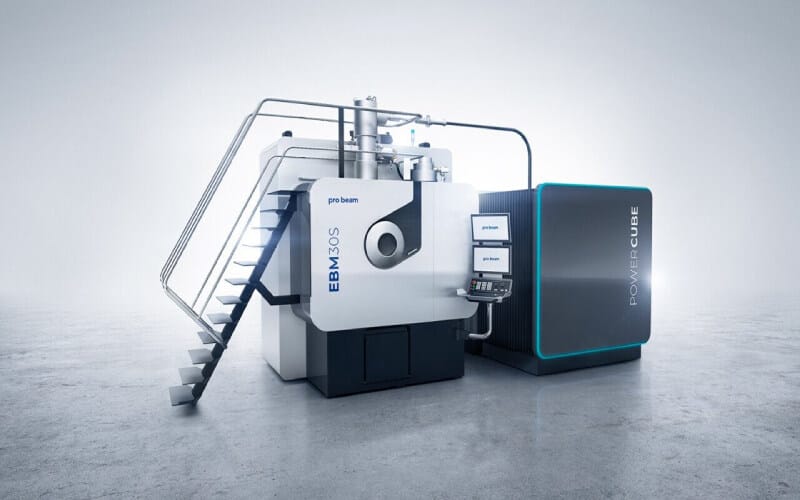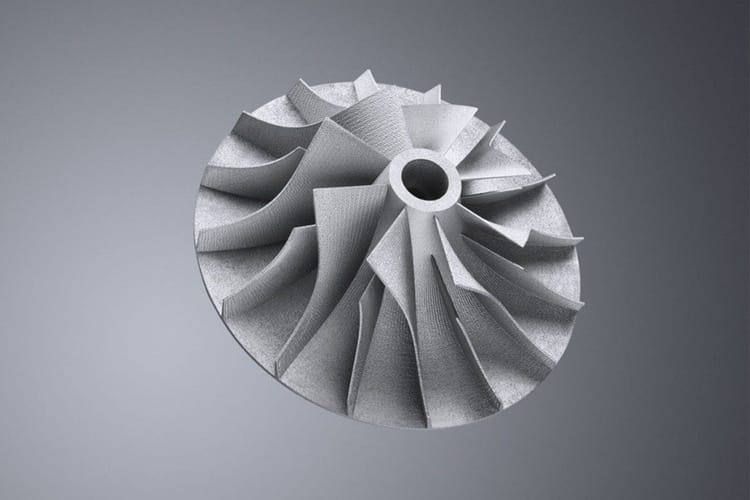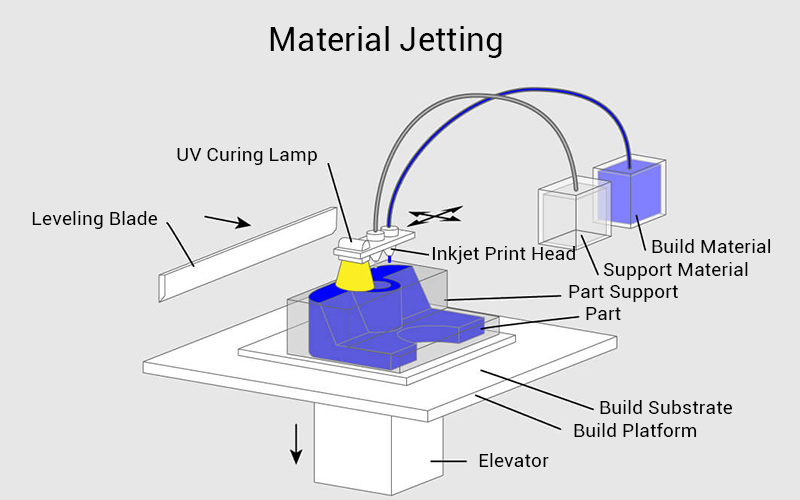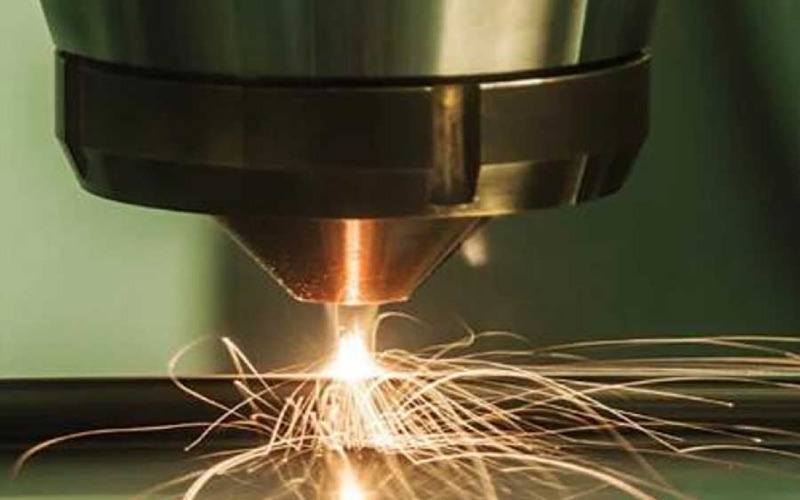The growing demand for complex parts in various industries such as in aerospace and medical(Specific industries) is working as a driving force for the growth of the electron beam melting(EBM) industry. According to the survey, in 2024, the EBM market hit about USD 210 million, and it is expected to increase by 7.60% by 2031.
Contents
What Is Electron Beam Melting (EBM)?
Electron beam melting is an advanced 3D printing technology that uses a high-energy electron beam to selectively melt metal powder, layer by layer, in a vacuum environment. Unlike conventional metal sintering techniques, EBM is able to produce fully dense, porosity-free metal parts.
EBM is capable of producing components with a minimum thickness of 0.05mm and high tolerance capability of ±0.4mm leading to its application not only in aerospace and medical but also in automotive and research areas.

Electron Beam Melting Process
Here is a step-by-step detailed process of EBM.
- 3D Design building: First of all, the design of the required components is created and optimized. With the help of CDA model.
- Build plate preparation and powder loading: Here, the cleanliness of the build plate is ensured to avoid any contamination as well as the feedstock is loaded into the electron beam melting machine.
- Vacuum Creation: In this step, to avoid any sort of oxidation of metal powder during melting, the build chamber is enclosed in a vacuum with a pressure of 0.0001mbar.
- Powder-Layering and Preheating:
The Build platform is covered with a thin, uniform layer of powder metal. An electron beam sinters the metal powder heating at about 600 to 1000 °C.
Selective melting and layer by layer construction:
A controlled laser beam is focused on the powdered metal with the help of magnetic plates and deflecting coils, leading to selective melting of powder forming the first layer. Now, the build platform is lowered, and a new layer of metal powder is spread, and the process is repeated until all the layers are formed.
- Post Build processing
Here, the build platform is removed, and any leftover sintered powder is cleaned. Finally, the part obtained is cleaned using Ultrasonic.
Electron Beam Melting Materials
Electron Beam Melting (EBM) uses materials with high conductivity, strength, melting temperature, and corrosion resistance. Here are some common materials:
Titanium and Titanium Alloy
Titanium and titanium alloy powers, like Ti-6Al-4V, show remarkable strength-to-weight ratio, good biocompatibility and high resistance to corrosion.. EBM utilizes titanium metal powder with high sphericity, good fluidity and low impurity content, with a particle diameter range of 45~105μm.

These alloys, such as Inconel 718 and 625, are used in ebm 3d printing to build corrosion-resistant parts of heavy machinery because these are suitable for high-stress applications.
Cobalt-Chrome alloys:
These alloys are known for their exceptional hardness and wear resistance, which are used in EBM to build hard and stronger, long-lasting components. These alloys include the ASTM F75 standard.
Tool Steel:
Metal powders are used to build components which require high hardness and toughness, such as H13, and Maraging steel is used as EBM material.
Electron Beam Melting Machine
The EBM Machine consists of the following components.
Electron beam Gun: This gun consists of a tungsten filament, which acts as a source of electrons, and a beam is generated, which is then used to melt the powder metal.
Vacuum chamber: the whole process of EBM is done in a vacuum chamber to prevent any sort of oxidation or unwanted reaction.
Powder bed: These components are used to read the metal powder that is to be used in the process. Electromagnetic coils: These coils play a key role in this process since they are responsible for controlling the direction of the electron beam according to the design fed by the CAD model.

Electron Beam Melting Advantages and Disadvantages
Electron Beam Melting Advantages
High Material Utilization
EBM maximizes material efficiency as unused powdered metal can be recycled, reducing waste significantly.
Precision in Complex Geometries
EBM is be capable of create intricate, high-precision components that are challenging to manufacture with traditional methods
Processing High Melting Point Metals
This technique made it easy to process the high melting point metals, such as titanium and tungsten, which were difficult to handle in traditional methods.
Green Technology
EMB produces minimum pollution as compared to traditional metal handling methods.
Electron beam melting disadvantages
Here are some electron beam melting cons or its limitations:
Highly expensive instrumentation
The ebm additive manufacturing machine is quite costly, and installation requires a huge amount because the whole process needs to be done in a vacuum chamber.
Slow processing speed
The processing speed of EBM is slow and time-consuming, especially when producing large components.
Material limitations
Since this method uses an electron beam, it can be used to process conductor material.
Lower Surface Finish and Resolution
Due to beam scattering, EBM produces parts with a rougher surface finish. Due to this, additional post-processing is required to achieve the desired smoothness and accuracy.
Electron Beam Melting Applications
EBM has found its application in multiple industries. Here are some;
Aerospace
Due to its capability of producing lightweight but stronger components, it is used to build parts of aircraft. Not only this, it is also used to build stronger stress-bearing parts of engines.
Defense
EBM finds its application in building critical military defensive components that are reliable to work under harsh conditions and resistant to wear.
Medical
EBM is utilized to build customized implants such as metal scaffolds, cranial, dental, and orthopedic implants.
Automotive:
Manufacture of automotive tooling and durable and high-stress engine parts and gearboxes is done with the help of EBM.
In the Future Development of EBM
Future EBM development focuses on reducing operational costs for this optimized scan strategies and multi-beam systems are being tested. EBM material research is expanding compatibility to advanced alloys and composites through tailored powder formulations. Enhanced electron beam control and in-situ monitoring will improve precision for complex geometries.
Electron Beam Melting vs Selective Laser Melting
| Feature | Electron Beam Melting (EBM) | Selective Laser Melting (SLM) |
|---|---|---|
| Energy Source | Electron Beam | High-Powered Laser |
| Atmosphere | Vacuum | Inert Gas (Argon or Nitrogen) |
| Material Used | Conductive Metals (Titanium, Nickel Alloys) | Wide Range (Titanium, Aluminum, Steel, etc.) |
| Particle Size | 45–106 μm | 20–45 μm |
| Build Speed | Faster (Multiple Melting Points) | Slower (One Point at a Time) |
| Resolution | Lower (Due to Beam Scattering) | Higher (More Precise Melting) |
| Surface Finish | Rougher, Requires Post-Processing | Smoother, Less Post-Processing Needed |
| Support Structure | Less Support Needed (Due to High Temps) | More Support Required |
| Residual Stress | Lower (Gradual Heating and Cooling) | Higher (Rapid Cooling Causes Stress) |
| Applications | Aerospace, Medical Implants, Turbine Blades | Aerospace, Automotive, Medical, Tooling |
| Cost | Higher (Due to Vacuum and Equipment) | Lower (Less Complex Setup) |
FAQ
1. What is the Balling Effect in Electron Beam Melting?
The balling effect in EBM occurs when molten metal forms spherical droplets instead of smooth layers. This is due to improper scanning speed, high surface tension, or inadequate preheating.
2. Does Electron Beam Melting work with Reactive Metals?
Yes, EBM is ideal for reactive metals like titanium and tantalum because the utilization of vacuum prevents any undesired reaction.
3. Why does Electron Beam Melting need a Vacuum?
EBM requires a vacuum chamber to eliminate oxygen and other contaminants. This prevents oxidation and ensures clean, high-quality metal parts with minimal impurities.






